Shifting gears with automatic transmission
For the small gear selector, change gear position by pushing the spring-loaded gear selector forward or rearward, or to the side for manual shifting. For the large gear selector, you instead move the gear selector to the left for manual shifting.
Selecting gears
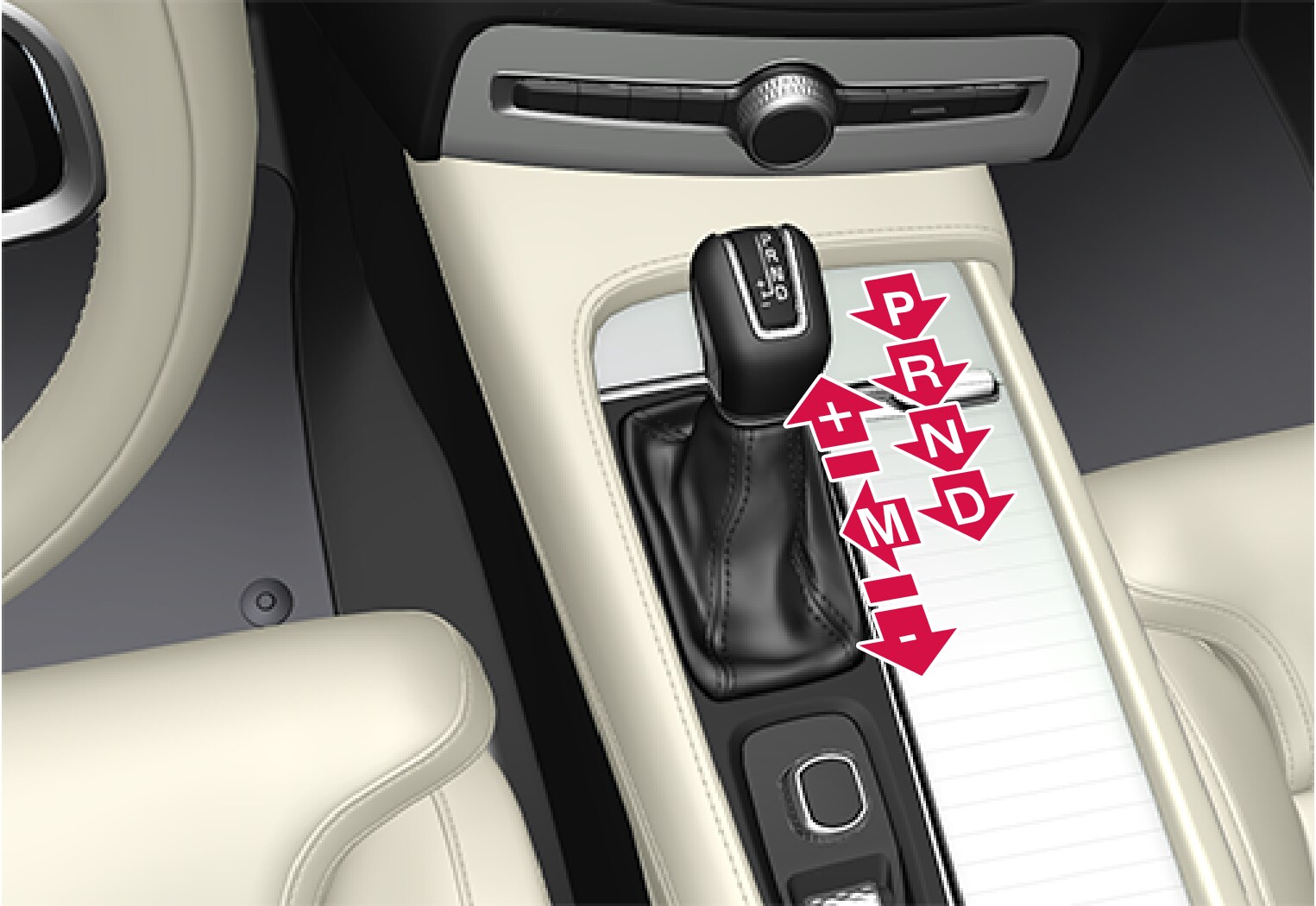
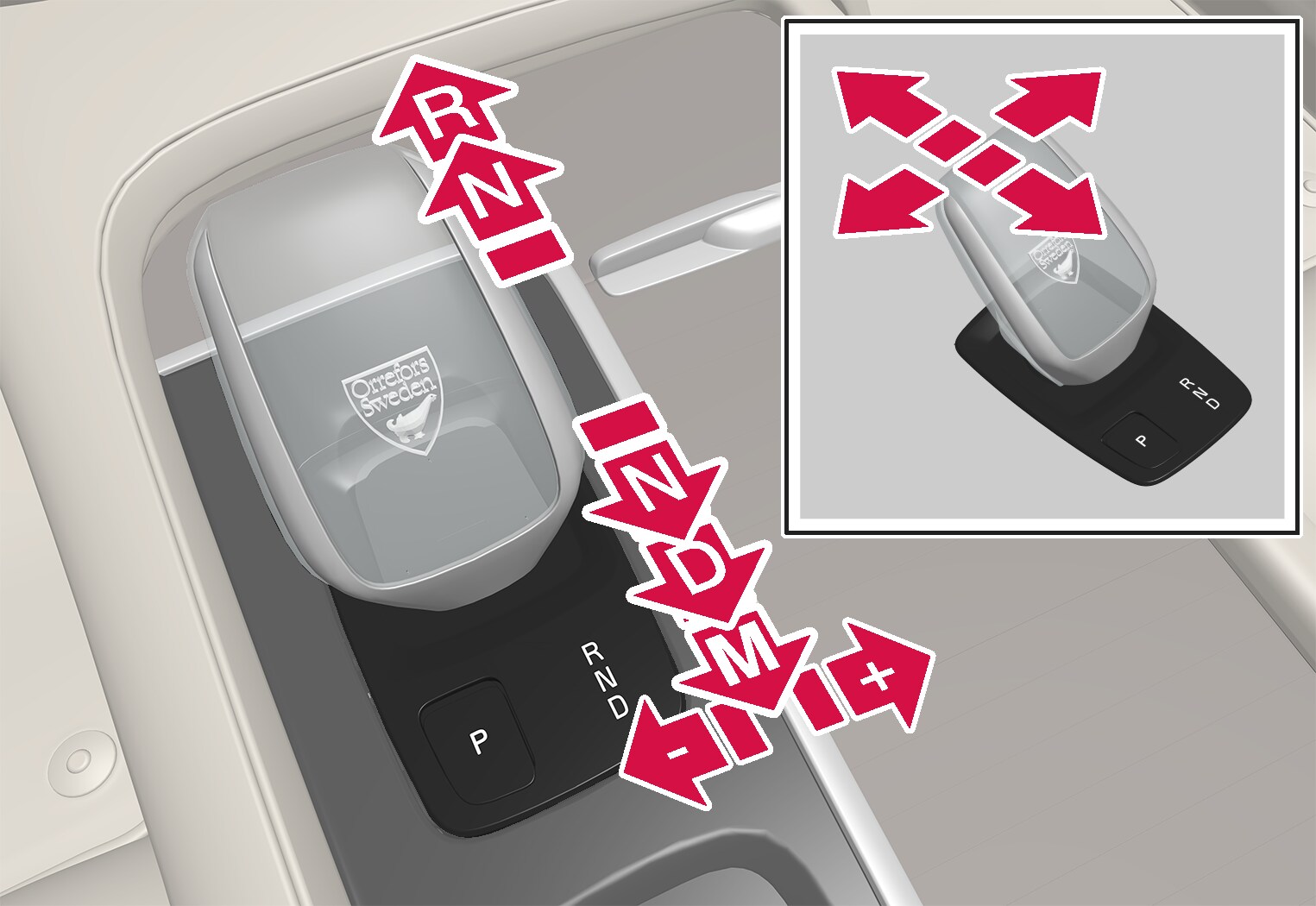
Gear selector positions
Parking – P
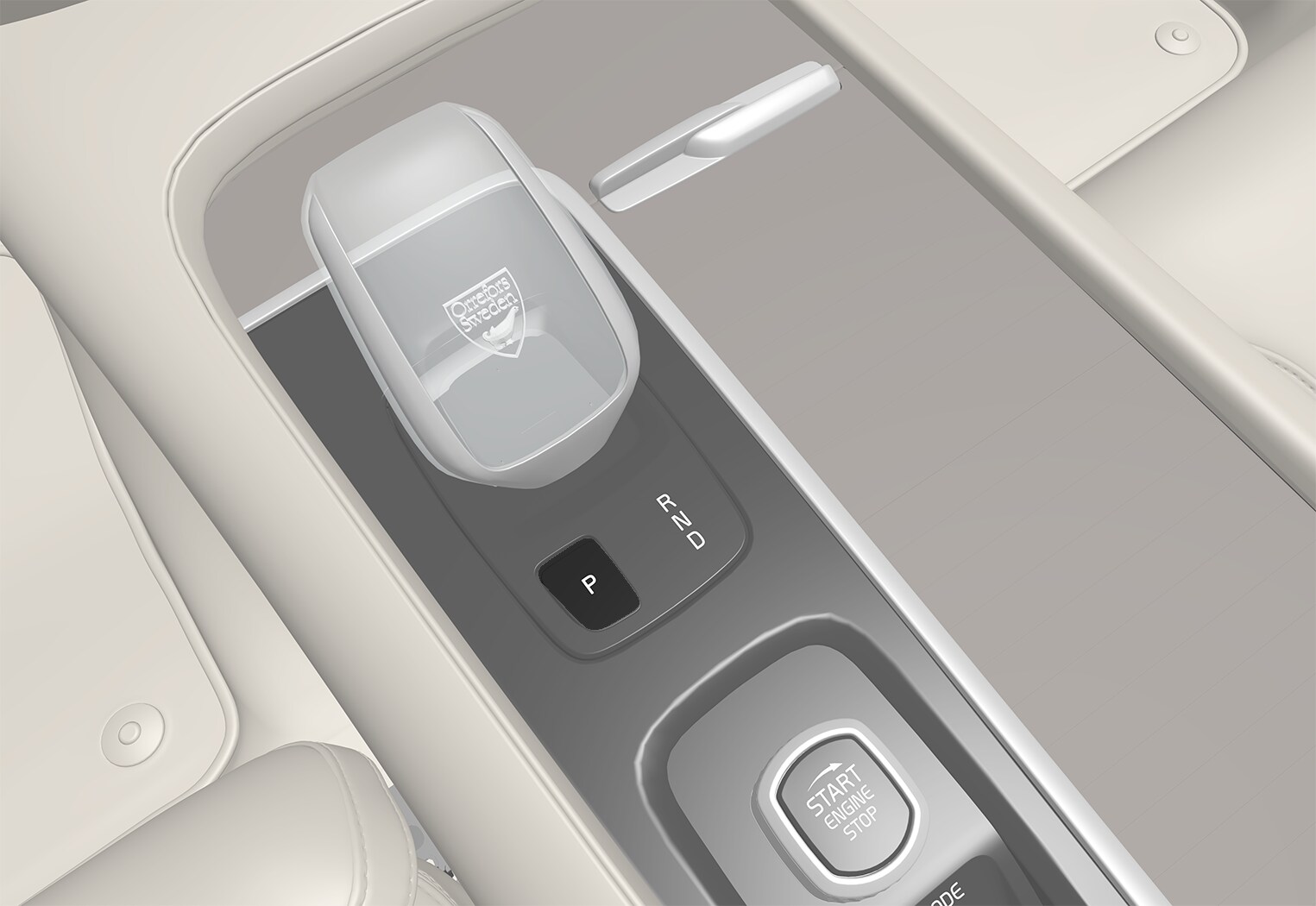
For the small gear selector, Park is activated using the P button next to the gear selector. For the large gear selector, Park is activated by moving the gear selector to position P.
In the P position, the transmission is mechanically locked.
Select P position when the vehicle is parked. The vehicle can be started when it is in P position. The vehicle must be stationary when P is selected.
When parking – apply the parking brake before shifting to position P.
Warning
Note
Help functions1
The system will switch to the P position automatically:
- if the ignition is switched off while D or R is selected and the vehicle is stationary.
- if the vehicle is moving at low speed and the driver unbuckles their seat belt and opens the driver's door without any pedal being depressed.
To park a vehicle with an unbuckled seat belt and open door – end P mode by shifting to R or D again.
If the vehicle is switched off in gear position N, it will not automatically switch to the P position. This makes it possible to wash the vehicle in an automatic car wash.
Reverse – R
Select R when backing up. The vehicle must be stationary when R is selected.
Neutral – N
In N position, the vehicle can roll freely. The vehicle can be started when it is in N position. Apply the parking brake if the vehicle is stationary with the gear selector in the N position.
To move to another gear position when N is selected, the brake pedal must be depressed and the ignition in mode II. For vehicles with the small gear selector, the engine must be running.
D drive mode
D is the normal driving gear position. The transmission shifts up or down automatically depending on acceleration and speed.
The vehicle must be stationary when the gear selector is moved from R to D.
Manual position – M
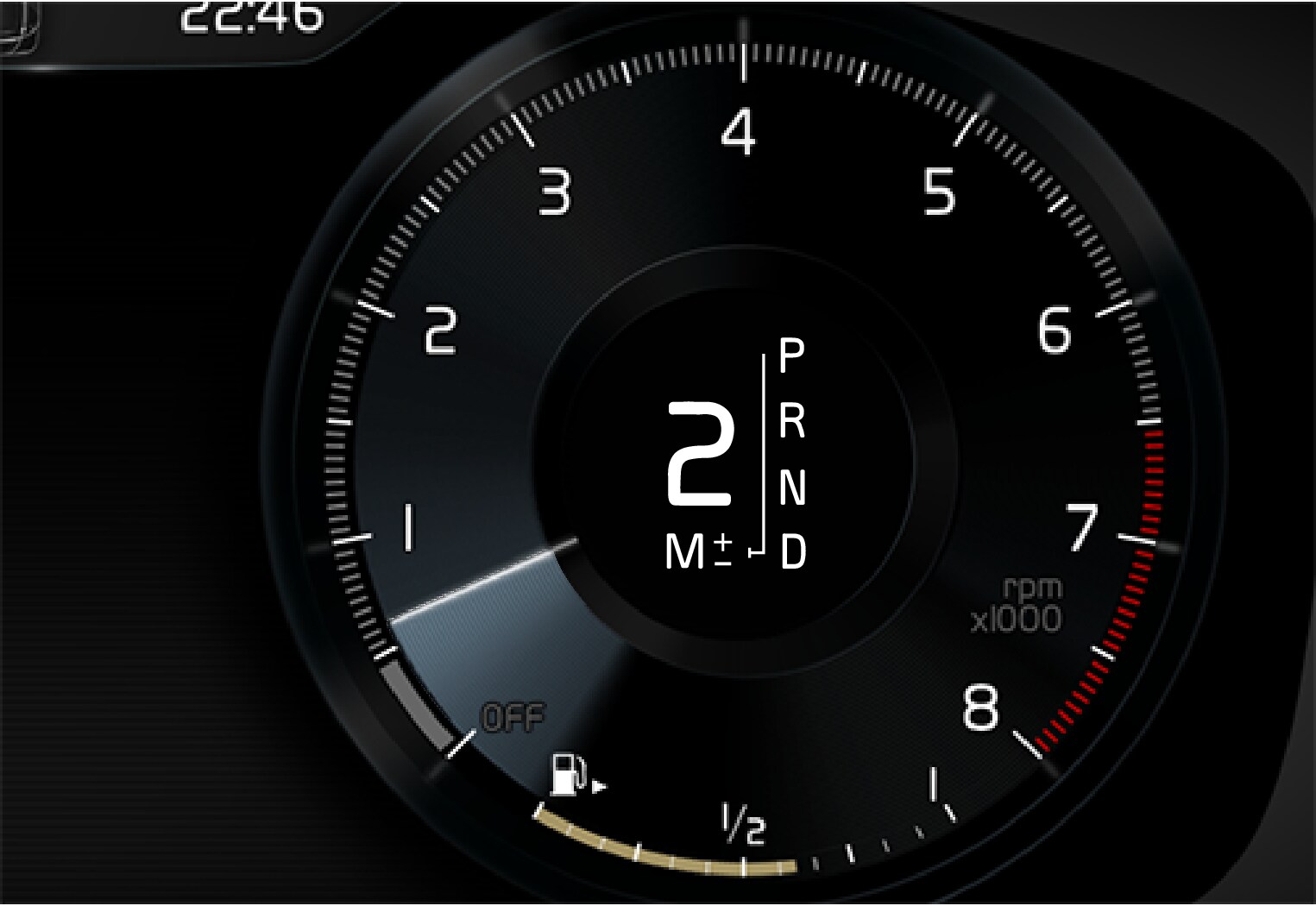
With position M, it is possible to shift gears manually. Engine braking will occur when the accelerator pedal is released.
The M position is selected by moving the gear selector to the side from D to the end position at "±".
- Push the gear selector forward toward + (plus) and release to shift up one gear.
- Pull the gear selector backward toward – (minus) and release to shift down one gear.
- Push the gear selector to the side to the end position at D to return to D mode.
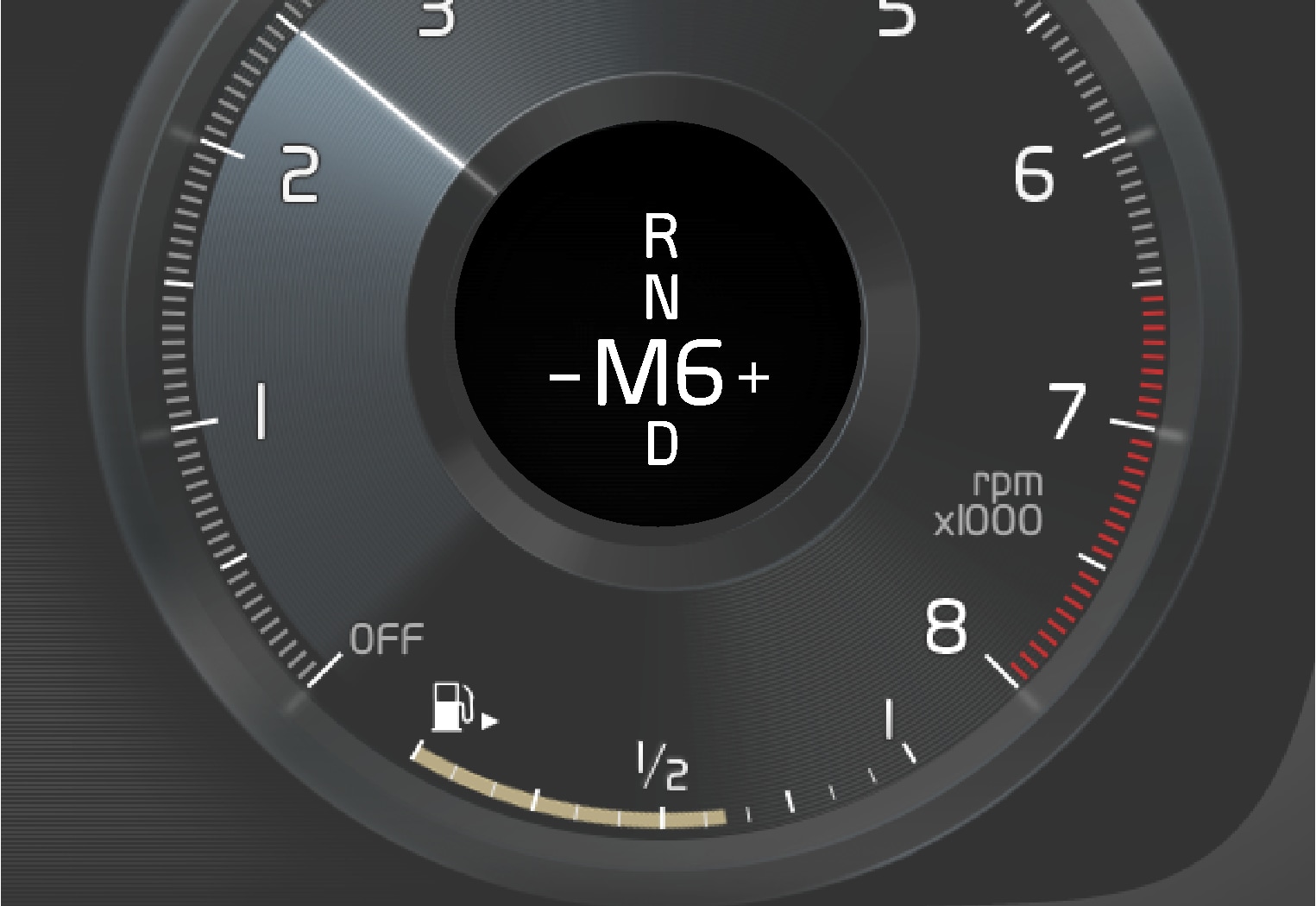
With position M, it is possible to shift gears manually. Engine braking will occur when the accelerator pedal is released.
M position is selected by moving the gear selector rearward from D.
- Push the gear selector to the right toward "+" (plus) and release to shift up one gear.
- Push the gear selector to the left toward "–" (minus) and release to shift down one gear.
- Push the gear selector rearward to return to D mode.
For smooth shifting and engine performance, the transmission will shift down automatically if the vehicle's speed becomes too low for the selected gear.